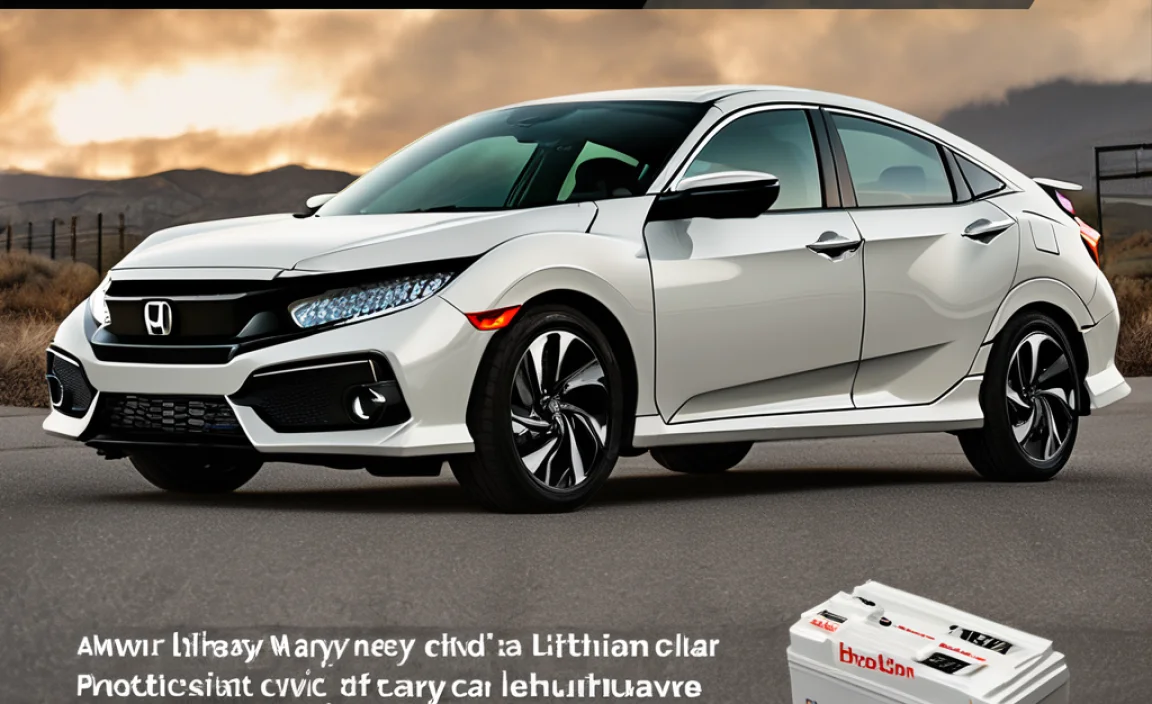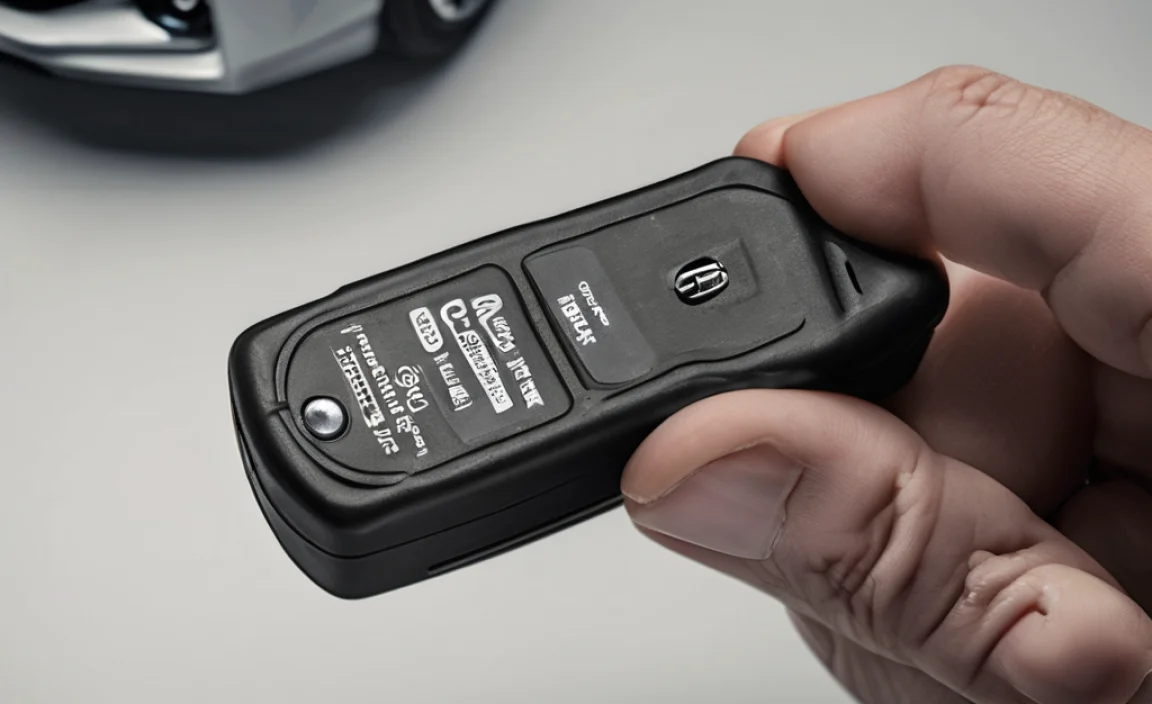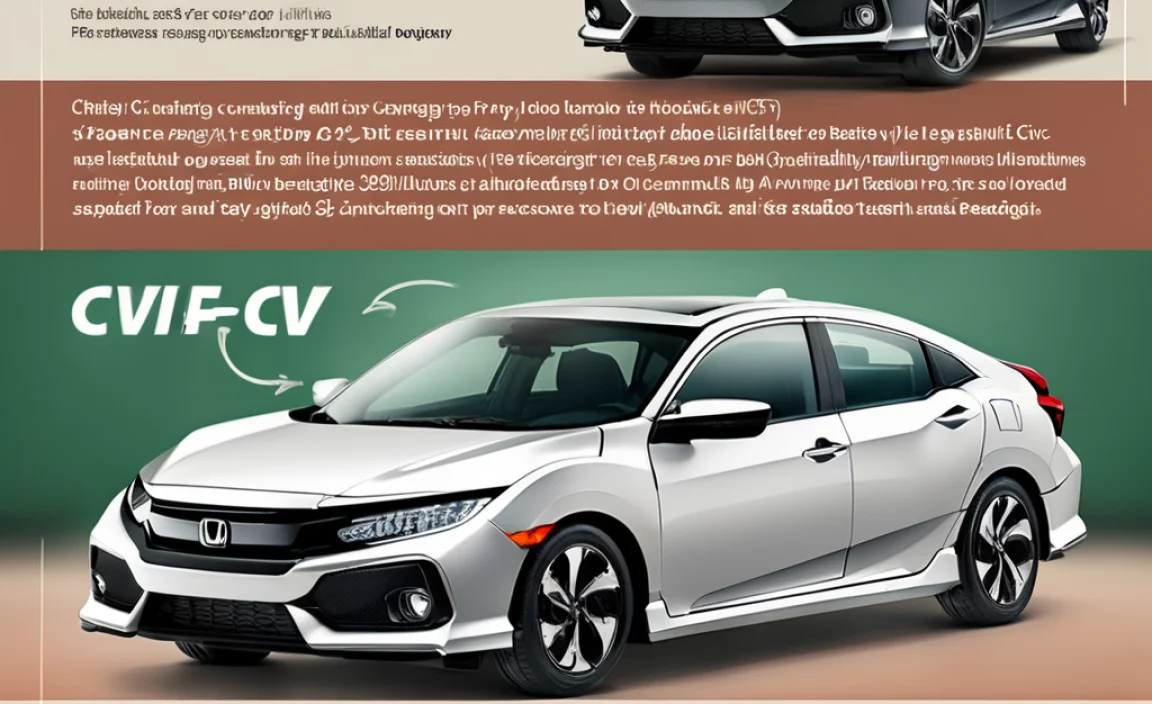AC/DC Adapter for Car: Essential Power for Your Devices
An AC/DC adapter for your car is a handy gadget that lets you power electronics like laptops, phones, and even small kitchen appliances right from your vehicle’s cigarette lighter socket. It’s perfect for road trips or keeping your essential devices charged when you’re on the go, ensuring you’re never disconnected.
Are you tired of your phone dying on a long drive? Or maybe you’d like to use your laptop in the car without worrying about the battery running out? It’s a common problem for many drivers. Luckily, there’s a simple solution: an AC/DC adapter for your car. These adapters connect to your car’s power outlet and let you plug in devices that normally use a wall outlet. Think of it as bringing a bit of your home power setup right into your car. We’ll walk you through what you need to know, how they work, and how to choose the right one. Get ready to power up your journey!
What is an AC/DC Adapter for Car and Why Do You Need One?
In simple terms, an AC/DC adapter for your car is a device that bridges the gap between your car’s power system and the electronics you want to use. Your car runs on a DC (Direct Current) power system, typically 12 volts. Most home electronics, like laptops, phone chargers, and even small fans, are designed to run on AC (Alternating Current) power, usually 110 or 220 volts.
The adapter does two main jobs:
- Converts DC to AC: Most adapters designed for laptops or other larger electronics actually contain an inverter. This inverter takes the 12-volt DC power from your car and converts it into 110/220-volt AC power, just like you get from a wall socket.
- Steps Down Voltage: Some simpler adapters, often called “car chargers,” are designed for devices that can directly use DC power, like most smartphones. These adapters take the 12-volt DC from your car and step it down to a lower DC voltage (like 5 volts) that your phone or tablet needs.
Why is this essential?
Imagine a long road trip. Your phone is your lifeline for navigation, entertainment, and emergencies. An AC/DC adapter means you can keep it charged without relying on power banks that eventually run out. For remote workers or students, being able to use a laptop in your car can turn downtime into productive time. It’s about convenience, staying connected, and having power when and where you need it most. It’s especially useful if you find yourself in situations where finding a power outlet a difficult task, like camping trips or long waits at remote locations.
How Car Power Adapters Work: The Magic Behind the Plug
Understanding how these adapters function can demystify them and help you pick the right one. It all starts with your car’s cigarette lighter socket, which is actually a 12-volt DC power outlet.
The role of the inverter
For devices requiring AC power, the adapter includes a power inverter. Here’s a simplified breakdown of what the inverter does:
- Oscillation: The inverter takes the steady 12V DC current from your car and uses electronic components to make it “wobble” back and forth, creating an alternating current.
- Voltage Transformation: This AC current then goes through a transformer to boost the voltage from 12 volts up to the standard 110 or 220 volts needed by your household electronics.
- Output: Finally, the adapter provides a standard AC outlet where you can plug in your device.
Not all adapters have this full inverter function. Simpler adapters, often called car chargers, are designed for devices that accept DC input directly.
Simple DC-to-DC conversion for smaller devices
For devices like smartphones and tablets, their own charging cables often have a small adapter built-in. This little plug that goes into your car’s socket takes the 12V DC input from the car and reduces it to the 5V DC output that your USB-powered device needs. This is why you see so many different USB car chargers – they are all performing this voltage reduction. The circuitry is much simpler than a full AC inverter.
Here’s a quick look at the typical voltage conversions:
| Power Source | Typical Voltage | Device Needs | Adapter Function |
|---|---|---|---|
| Car Battery / Socket | 12V DC | Laptop (AC) | DC to AC Inverter (12V DC to 110/220V AC) |
| Car Battery / Socket | 12V DC | Smartphone/Tablet (USB) | DC-to-DC Converter (12V DC to 5V DC) |
| Wall Outlet | 110/220V AC | Laptop/Phone | AC to DC/AC Adapter (Built into device or separate brick) |
This distinction is crucial because it determines the type of adapter you need and its power output capabilities. An adapter built for your phone won’t power your laptop, and an adapter designed for a laptop might be overkill for simply charging your phone.
Types of AC/DC Adapters for Your Car
When you start looking for an adapter, you’ll notice there are a few main types, each suited for different needs.
1. Power Inverters (DC to AC)
These are the most powerful adapters. They convert your car’s 12V DC power into 110/220V AC power. This means you can plug in electronics that typically use a wall socket.
Pros:
- Can power a wide range of AC devices: laptops, small appliances (like coffee makers or blenders), power tools, game consoles, and more.
- Versatile for camping, remote work, or emergencies.
Cons:
- More expensive than simple USB chargers.
- Require more power from your car’s electrical system. You need to be mindful of what you’re powering to avoid draining your car battery, especially if the engine isn’t running.
- Can generate heat and sometimes a slight hum.
Important Considerations for Inverters:
- Wattage: This is the most critical factor. It tells you how much power the inverter can supply. Check the wattage requirements of the devices you plan to power. For example, a laptop might need 60-100 watts, while a small blender might need 300-500 watts. You need an inverter with a higher wattage rating than the total of all devices you plan to run simultaneously. Look for continuous wattage (what it can sustain) and surge wattage (what it can handle for a short burst, like when a device starts up).
- Waveform Type: Inverters produce different “types” of AC power. Modified Sine Wave (MSW) is common and works for many basic electronics. Pure Sine Wave (PSW) is cleaner power and is recommended for sensitive electronics like medical equipment, audio/video gear, and some modern laptops. PSW inverters are usually more expensive.
- Number of Outlets: Some have a single AC outlet, while others have multiple.
- USB Ports: Many inverters also include USB ports for charging smaller devices.
2. USB Car Chargers (DC-to-DC Converters)
These are the most common type of car adapter. They plug into your car’s socket and provide one or more USB ports to charge your smartphones, tablets, GPS devices, and other USB-powered gadgets.
Pros:
- Inexpensive and widely available.
- Simple to use – just plug it in and connect your device’s USB cable.
- Low power draw, so they are safe to use even with the engine off for reasonable periods.
Cons:
- Cannot power devices that require AC power (like laptops, unless the charger has a built-in inverter, which is rare for standard USB chargers).
- Charging speeds can vary.
Important Considerations for USB Chargers:
- Amperage (A) and Voltage (V): USB charging is measured in amps (A) and volts (V). Standard USB 2.0 provides 0.5A. USB 3.0 and fast-charging standards can go much higher (e.g., 2.4A per port, or even higher with protocols like Qualcomm Quick Charge or USB Power Delivery). Choose a charger with sufficient amperage to charge your devices quickly. Some have smart ports that detect your device and deliver the optimal charging speed.
- Number of Ports: Do you need to charge just one device or several at once? Chargers with multiple ports are great for families or if you have a phone and a tablet.
- Fast Charging Compatibility: If you have a newer phone that supports fast charging, look for a charger that also supports those protocols (e.g., QC 3.0, PD).
3. Specialized Adapters
There are also adapters designed for specific devices, such as:
- Laptop-Specific Car Adapters: These are essentially smaller, car-friendly versions of power inverters, designed to provide the exact voltage and wattage your laptop needs. They often come with interchangeable tips to fit different laptop brands. They are more efficient than a general-purpose inverter for just charging a laptop because they precisely match the power requirements.
- Portable Refrigerators/Coolers: Some devices designed to run off AC power can also run directly from a 12V DC source, but require a specific adapter or plug type that plugs directly into the car’s accessory socket.
Choosing the Right AC/DC Adapter for Your Car
Now that you know the types, how do you pick the best one? It’s all about matching the adapter to your needs.
Step 1: Identify Your Devices
What do you actually want to power in your car?
- Smartphones, Tablets, E-readers, GPS: These almost always use USB. A good quality USB car charger is all you need.
- Laptops: This is where it gets trickier. Most laptops use AC power. You’ll likely need a power inverter or a laptop-specific car adapter. Check your laptop’s power brick – it will tell you the required AC input voltage (e.g., 100-240V) and wattage (e.g., 65W).
- Small Appliances (Fans, mini-fridges, coffee makers): These also require AC power. You will need a power inverter with enough wattage.
Step 2: Determine Wattage Needs (for Inverters and Laptop Adapters)
This is crucial. If you plug a device that requires more power than the adapter can supply, the adapter might shut down, overheat, or even be damaged. It could also strain your car’s electrical system.
How to find the wattage:
- On the Device: Look for a label or plate on the device itself.
- On the Power Brick/Adapter: For laptops and many small appliances, the original power adapter (the brick) will list the input power requirements. It might list Volts (V) and Amps (A). To get Watts (W), multiply Volts by Amps (W = V x A). For example, if a laptop charger says 19V and 4.74A, it needs about 90 watts (19 4.74 ≈ 90).
- In the Manual: Your device’s user manual is a good source of power specifications.
Rule of thumb: Always choose an adapter with a wattage rating higher* than your device’s needs. For example, if your laptop needs 65W, get at least a 100W inverter, preferably higher (like 150W or 200W) to allow for fluctuations and to ensure it doesn’t run at its absolute limit all the time.
Step 3: Consider the Type of AC Power (for Inverters)
As mentioned, Pure Sine Wave (PSW) inverters are best for sensitive electronics. If you’re only powering something basic like a fan or charging a laptop, a Modified Sine Wave (MSW) inverter might suffice and is usually cheaper. If in doubt, or if you plan to power audio equipment, medical devices, or anything with a digital display or motor, opt for PSW.
Step 4: Check for USB Ports
If you’re buying an inverter or a laptop adapter, it’s often a good idea to get one that also includes USB ports. This gives you a convenient way to charge your phone or tablet at the same time without needing a separate USB charger.
Step 5: Safety and Certifications
Look for adapters that have safety certifications, like UL, CE, or FCC. These indicate that the product has met certain safety and quality standards. Reputable brands usually display these clearly. Also, check reviews for common issues like overheating or failure.
Step 6: Car Compatibility
Almost all car adapters are designed to fit standard US 12V cigarette lighter sockets. If you are in a country with a different type of socket (e.g., some European countries use different-sized sockets), ensure the plug is compatible.
How to Safely Use Your AC/DC Adapter in the Car
Safety first! These adapters, especially inverters, draw a significant amount of power from your car. Following these tips will keep you and your devices safe.
1. Engine On for High-Wattage Devices
If you are using a power inverter to run anything substantial – like a laptop, a portable fridge, or a medical device – always ensure your car’s engine is running. This is crucial because these devices draw a lot of power. Running them with the engine off can quickly drain your car battery, leaving you stranded. The alternator typically produces enough power to both run the car and power the inverter when the engine is on.
For simple USB chargers powering a smartphone, it’s usually okay to use these for a while with the engine off, but prolonged use will still drain the battery. It’s best practice to start the car periodically or use them while the engine is running.
2. Don’t Overload the Adapter
As discussed, never try to power a device that requires more wattage than your adapter is rated for. Overloading can cause the adapter to overheat, shut down, or fail. Some adapters have built-in overload protection, but it’s best not to test them.
3. Proper Ventilation
Power inverters, especially, can get warm during operation. Ensure the adapter has plenty of airflow around it. Don’t cover it with blankets, papers, or place it in a confined, unventilated space. Proper ventilation helps prevent overheating.
4. Secure the Adapter
Make sure the adapter is plugged in securely and doesn’t dangle in a way that could be pulled out accidentally, especially while driving. A loose connection can cause intermittent power or damage the socket or the adapter.
5. Clean the Socket
Before plugging in your adapter, briefly check the car’s cigarette lighter socket for any debris or corrosion. A clean connection ensures optimal performance and safety.
6. Inspect Cables
Regularly check the adapter’s cables for any damage, fraying, or kinks. Damaged cables can be a fire hazard or lead to the adapter not working correctly.
7. Type of Waveform Matters
If you have sensitive electronics, such as audio equipment, medical devices, or some laptops, use a Pure Sine Wave inverter. Modified Sine Wave inverters can sometimes cause these devices to operate erratically, produce noise, or even damage them over time.
8. Battery Protection Features
Many modern adapters, especially inverters, come with built-in safety features like low-voltage shut-off (to prevent draining your battery too much), over-voltage protection, short-circuit protection, and overheating protection. Understanding these features can give you peace of mind.
For more on car electrical systems and battery care, you can consult resources like Battery University for general battery tips.
Troubleshooting Common Adapter Issues
Even the best adapters can sometimes throw a curveball. Here are a few common problems and their solutions:
Issue: Adapter is not powering my device/nothing happens.
- Check the connection: Is the adapter firmly plugged into the car’s cigarette lighter socket?
- Check the car’s fuse: The cigarette lighter socket has its own fuse. If it’s blown, the socket won’t receive power. You can usually find your car’s fuse box diagram in the owner’s manual. Replacing a blown fuse is a straightforward DIY task. <a href="https://www.autozone.com/diy/basic-car-maintenance/how-to-



